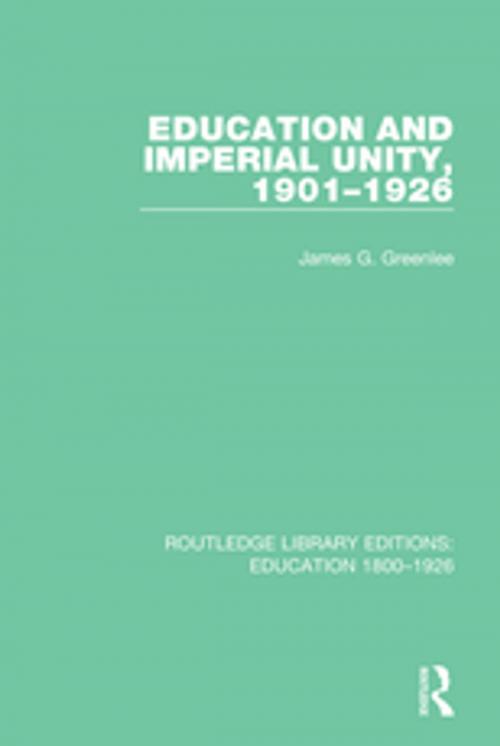Education and Imperial Unity, 1901-1926
Nonfiction, Reference & Language, Education & Teaching, History| Author: | James G. Greenlee | ISBN: | 9781315404561 |
| Publisher: | Taylor and Francis | Publication: | November 18, 2016 |
| Imprint: | Routledge | Language: | English |
| Author: | James G. Greenlee |
| ISBN: | 9781315404561 |
| Publisher: | Taylor and Francis |
| Publication: | November 18, 2016 |
| Imprint: | Routledge |
| Language: | English |
Under the influence of mounting foreign competition in the late-Victorian and Edwardian periods, many Britons sought to bolster England’s world position by reinforcing the unity of the Empire. For the most part their effort were channelled into an attempt to construct a formal political union or federation of Britain’s overseas dominions. However, when the so-called Imperial Federation Movement failed to produce a viable constitutional solution the problem of unity a number of people began to search for an alternative, non-political approach. In this connection a campaign was mounted during the first two decades of the twentieth century that came to emphasise the informal, spiritual ties which supposedly bound the Empire together.
This title, first published in 1987, brings to light the assumptions, aspirations and schemes of those predominantly middle-class figures who orchestrated the Imperial Studies Movement at the turn of the twentieth-century. This title will be of interest to students of history and education.
Under the influence of mounting foreign competition in the late-Victorian and Edwardian periods, many Britons sought to bolster England’s world position by reinforcing the unity of the Empire. For the most part their effort were channelled into an attempt to construct a formal political union or federation of Britain’s overseas dominions. However, when the so-called Imperial Federation Movement failed to produce a viable constitutional solution the problem of unity a number of people began to search for an alternative, non-political approach. In this connection a campaign was mounted during the first two decades of the twentieth century that came to emphasise the informal, spiritual ties which supposedly bound the Empire together.
This title, first published in 1987, brings to light the assumptions, aspirations and schemes of those predominantly middle-class figures who orchestrated the Imperial Studies Movement at the turn of the twentieth-century. This title will be of interest to students of history and education.















